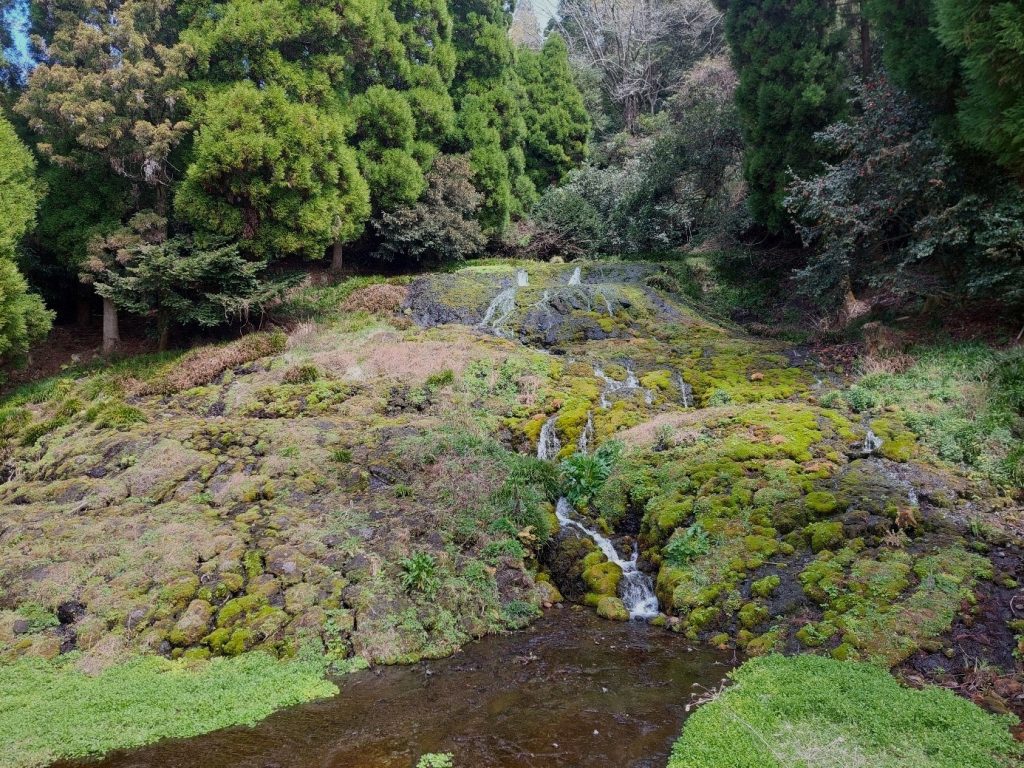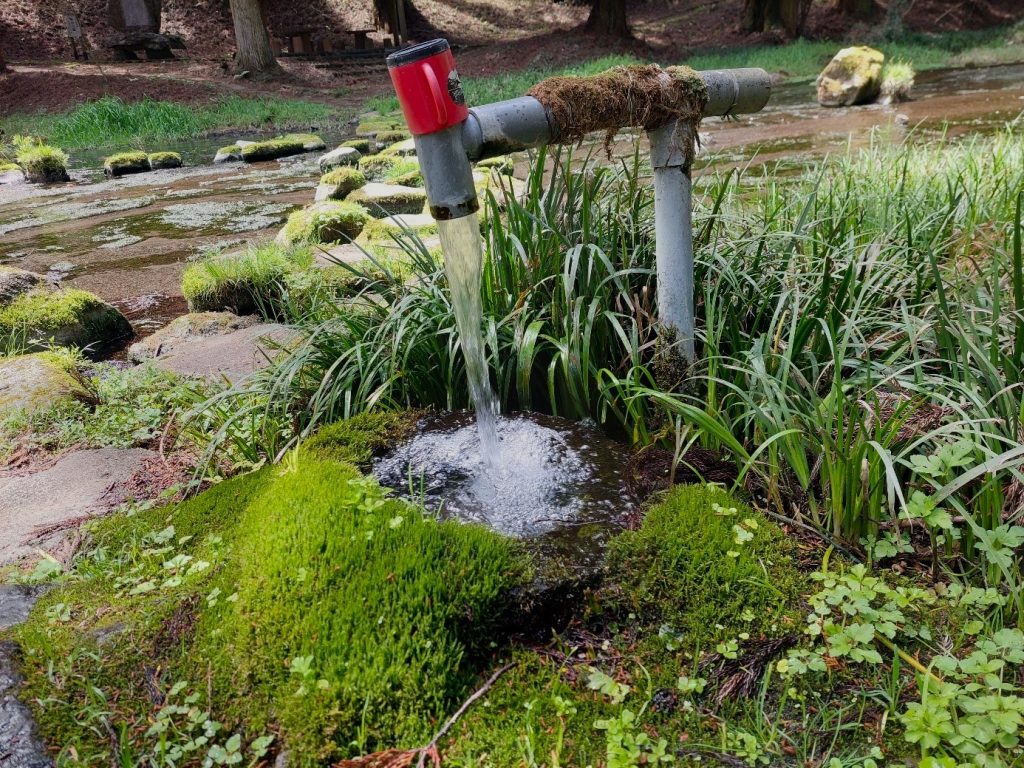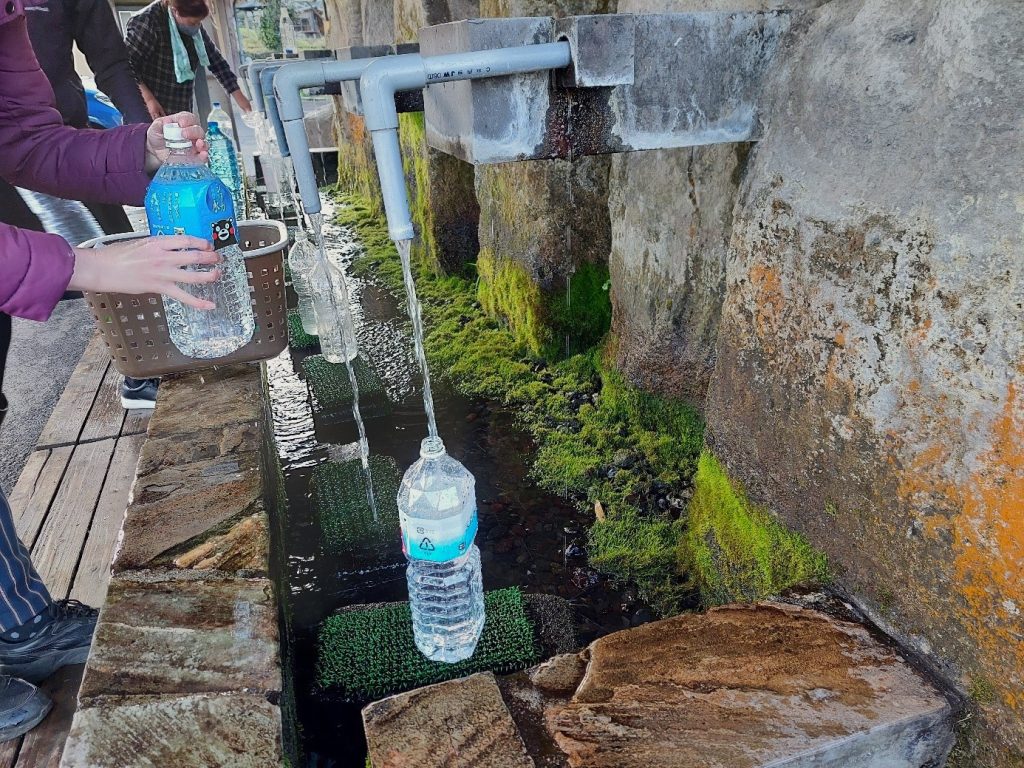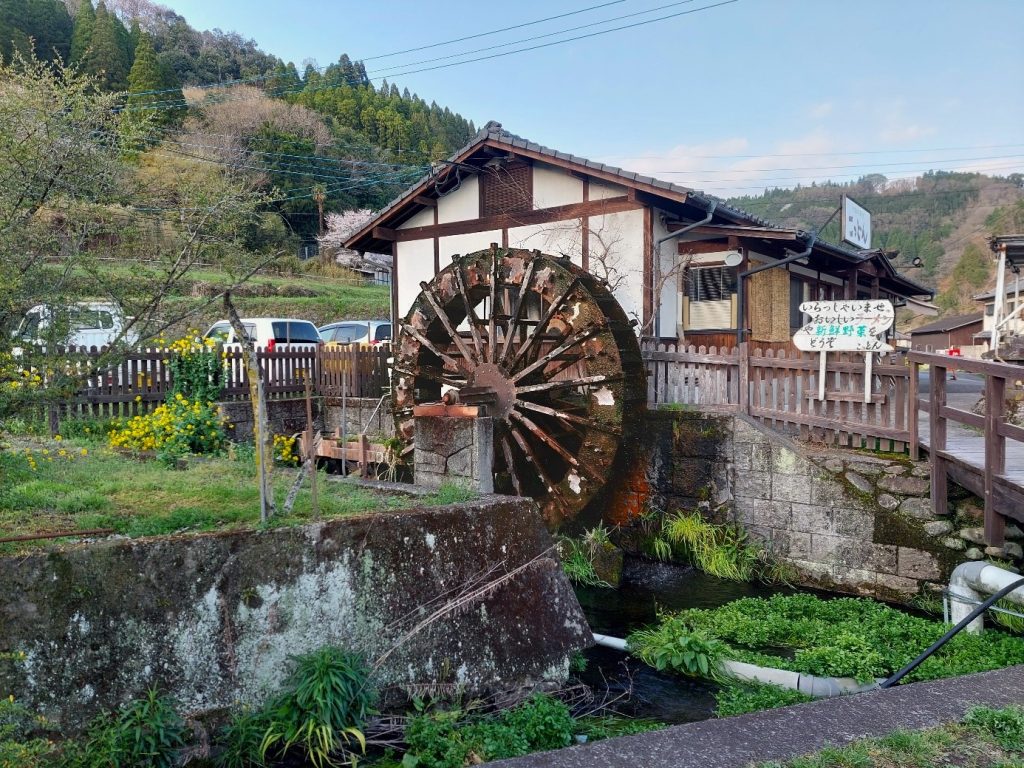by Cornelia Reiher
“What town has a waterfall behind the train station?” one of my research participants asked me proudly as we began our sightseeing tour of his favorite spots in Taketa in the spring of 2023. The impressive waterfall cascades down a rock face and springs from a source near an old shrine that was once the center of the town. He introduced me to the many streams, springs and hot springs in the area and took me to hidden springs, small ponds and waterfalls that I would never have found without his expertise as a local guide. If you spend a little time in Taketa and talk to locals and urban-rural migrants alike, at some point the topic of water comes up. The good quality of the water was mentioned by almost everyone, and some urban-rural migrants have moved to Taketa because of it. Fetching drinking water from the many springs in the area is an integral part of everyday life for many, and water has also become an important part of Taketa’s marketing strategy.

Copyright © Cornelia Reiher 2023
The motivations for moving to a particular rural location are unique to each urban-rural migrant, but many people I interviewed or who appear in online promotional videos for urban-rural migration cite nature as an important reason for their relocation. They moved to the countryside because they wanted to live closer to nature, raise their children in a safe and healthy environment or grow their own food. Fetching spring water (wakimizu) is mentioned in promotional materials and interviews alike as a feature of an idealized rural lifestyle surrounded by beautiful nature. In Taketa, many of the urban-rural migrants I interviewed told me that they moved here because of the good water quality, among other reasons. One migrant praised the beautiful mountains, rivers, sky and water. Another migrant said: “The water is simply wonderful.” (Interview with a female migrant, 2022). Return migrants emphasized that they returned because the food tastes better due to the good water quality, and migrants with children mentioned that they enjoy swimming in the clean water of the rivers. Some stressed that the hot springs in Taketa are better (in terms of water quality) and cheaper than in Oita-shi.

Copyright © Cornelia Reiher 2023
When I visited Taketa, I always found spring water in my accommodation and in restaurants. Signs pointed out the name of the spring and the health benefits of drinking this particular spring water. My research participants took me to the numerous springs in the area to replenish their drinking water supplies. When we arrived with a trunk full of empty canisters or pet bottles, we parked next to other cars, often from other prefectures in Kyushu, but sometimes also from Honshu. My research participants proudly pointed out to me that people travel long distances to fetch the delicious spring water from Taketa. We had to queue at some springs to fill up our pet bottles, and some springs were completely deserted. Instead of fetching the water from the stream, the community set up taps to make fetching the spring water easier. While for some urban-rural migrants this practice of fetching water has become a routine that makes them feel closer to nature, for some locals it is an economic necessity and a way to save money on their water bill.

Copyright © Cornelia Reiher 2023
Water has also become an important tourist asset in Taketa. The tourism association has created a map of scenic springs. Local guides take tourists to waterfalls and hot springs and promote Taketa’s waterways. There are folk tales about water, such as the story about a dragon living by a waterfall. The dragon terrorized the area and had to be calmed with the head of a cow. After that, he apparently behaved himself. But water is not only important for people’s daily lives and local identity, maintaining its quality and keeping the waterways clean is also a challenge. When we visited different places in spring 2023, my local tour guide pointed out that there was not enough water in the ponds and streams and expressed his concern about how this would affect trees, wildlife and people.

Copyright © Cornelia Reiher 2023
In addition to these environmental challenges, the maintenance of the city’s water channels is becoming increasingly difficult due to the ageing population and the exodus of young people. Residents usually clean the canals together with their neighborhood association (jichikai). In some neighborhoods, only older people still take part in such activities because their children have moved away. In some cases, urban-rural migrants now help with the neighborhood association’s activities to maintain and clean the waterways. In this way, the circle is complete: the water has attracted people to Taketa and is now being maintained by them.
